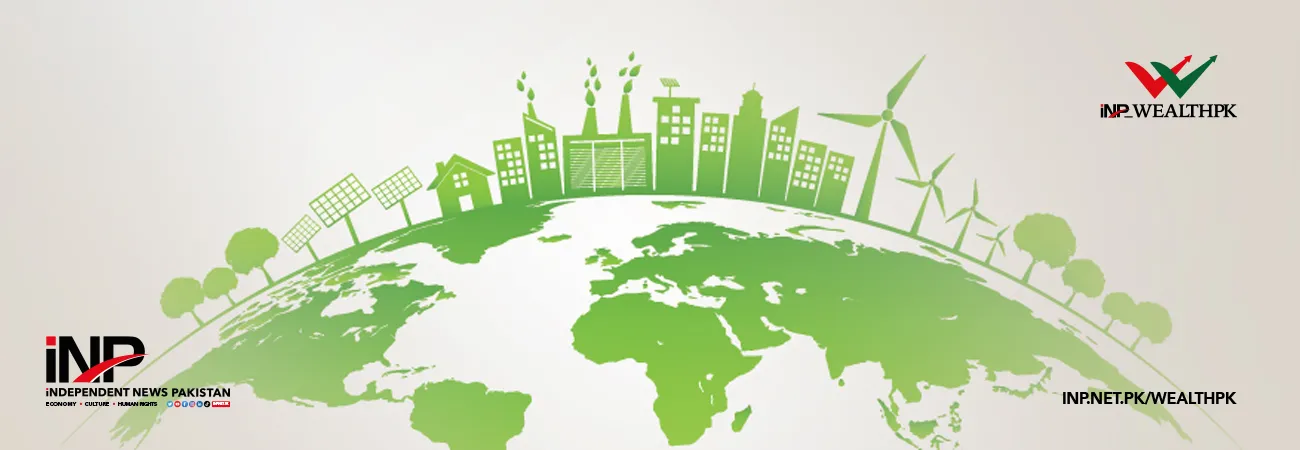INP-WealthPk
By Ayesha Saba
ISLAMABAD, Nov 05 (INP-WealthPK): Free trade or liberalised economies are more likely to have higher growth rates and lower poverty levels compared to the economies with trade barriers.
In a world of competition countries get maximum benefits from their trading partners to attain social and economic development.
Under free trade agreements, countries allow their trading partners to carry out imports and exports of goods and services on the basis of comparative advantage.
There are various free trade agreements among countries to promote trade and investment. The major examples are North American Free Trade Agreement (NAFTA) and the European Free Trade Association (EFTA).
As many as 15 countries have formed the world's largest regional trading bloc called Regional Comprehensive Economic Partnership (RCEP), covering nearly one-third of the global economy. Pakistan is part of free trade agreements with China, Sri Lanka and Malaysia, and has also signed preferential trade agreements (PTAs) with Iran, Indonesia and Mauritius.
In addition, Pakistan and the US have struck Trade and Investment Framework Agreement (TIFA) with a view to improving cooperation and enhancing opportunities for trade and investment.
Pakistan was the first South Asian country to have an FTA with China in November 2006. The first phase of the implementation of FTA was completed in 2012, and the country has entered into the second phase of its implementation.
The multi-billion-dollar China-Pakistan Economic Corridor (CPEC) is the biggest investment ever made by China in another country under this free trade agreement. This mammoth project promises prosperity for Pakistan.
From 2005 to 2021, trade volume between Pakistan and China has been significantly increased from US$4 billion to US$20 billion.
China has allowed Pakistan to export more than 1,000 products with zero duties. China is the second largest export market for Pakistan after the United States. The major export products are raw cotton, cotton yarn, copper, fabrics, textiles, meat, dairy products, agricultural products like fresh and processed fruits, and leather etc.
To boost exports to China, the Pakistani exporters are focusing more on diversified products than homogenous ones.
According to the United Nation’s COMTRADE database on international data, Pakistan’s exports to China stood at US$20 billion and imports at US$12.50 billion during 2020.
Table 1: Exports to China
 Table 2: Imports from China
Table 2: Imports from China
 FTA between Pakistan and Saudi Arabia is also in the pipeline, and according to commerce ministry officials, Pakistan will give the same trade facilities to Saudi Arabia as it offers to China. Textiles, leather products, sports goods and pharmaceutical products are exported to the Kingdom.
As Pakistan’s is a developing economy, so it needs free trading initiatives to expand and boost its export base for a sustained and inclusive growth, leading to strong current account.
Out of Pakistan’s total trade volume of over US$75 billion share of exports is a meagre US$24 billion, which can only be improved through forging FTAs with more countries.
Pakistan has a potential to diversify its export base beyond the textile exports. Of late, there have been pragmatic steps taken to include other sectors into the export-oriented sectors.
With the Covid-19 pandemic loosening its grip and economies regaining the growth path, Pakistan’s economy is also on the recovery path, and with solid steps taken the country is sure to achieve the sustained growth it has set for the coming years with the help of its trading partners, especially China and Saudi Arabia.
FTA between Pakistan and Saudi Arabia is also in the pipeline, and according to commerce ministry officials, Pakistan will give the same trade facilities to Saudi Arabia as it offers to China. Textiles, leather products, sports goods and pharmaceutical products are exported to the Kingdom.
As Pakistan’s is a developing economy, so it needs free trading initiatives to expand and boost its export base for a sustained and inclusive growth, leading to strong current account.
Out of Pakistan’s total trade volume of over US$75 billion share of exports is a meagre US$24 billion, which can only be improved through forging FTAs with more countries.
Pakistan has a potential to diversify its export base beyond the textile exports. Of late, there have been pragmatic steps taken to include other sectors into the export-oriented sectors.
With the Covid-19 pandemic loosening its grip and economies regaining the growth path, Pakistan’s economy is also on the recovery path, and with solid steps taken the country is sure to achieve the sustained growth it has set for the coming years with the help of its trading partners, especially China and Saudi Arabia.













